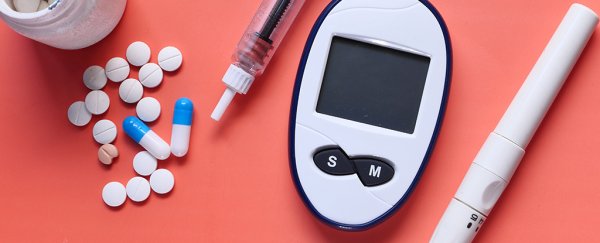People with prediabetes have a higher than normal blood sugar level, and sometimes – but not always – go on to develop type 2 diabetes. Doctors should now be able to better manage that risk, thanks to a study identifying six different subtypes of prediabetes.
In an analysis covering 25 years of data and 899 individuals, researchers were able to categorise these six subtypes through a series of shared biomarkers, including glucose levels, liver fat, body fat distribution, blood lipid levels, and genetic risk.
The six subtypes (or "clusters") carry different levels of risk when it comes to developing type 2 diabetes, and that should help health professionals in tailoring treatments to match, as well as managing prediabetes and the secondary issues that come with it.
"For people with prediabetes it has not been possible until now to predict whether they would develop diabetes and be at risk for serious complications such as kidney failure, or whether they would only have a harmless form with slightly higher blood glucose levels but without significant risk," says medical researcher Hans-Ulrich Häring from the German Centre for Diabetes Research (or DZD).
Clusters 1, 2 and 4 represent a low diabetes risk: they include participants who aren't overweight, or who are overweight but have a relatively healthy metabolism. Clusters 3, 5 and 6, meanwhile, are linked to an increased risk of diabetes and secondary diseases.
Those in cluster 3 produce too little insulin naturally, as well as showing other biomarkers such as higher intima-media thickness (IMT) in their arteries. Cluster 5 includes people more resistant to the effects of insulin and also with higher amounts of liver fat.
Those in cluster 6 have higher levels of particular types of body fat (visceral and renal sinus). While these individuals have a lower risk of developing diabetes compared with clusters 3 and 5, there is a higher mortality risk and more chance of kidney malfunction in this group.
 (DZD)
(DZD)
"As in manifest diabetes, there are also different disease types in the preliminary stage of diabetes, which differ in blood glucose levels, insulin action and insulin secretion, body fat distribution, liver fat and genetic risk," said diabetologist Robert Wagner, from DZD.
To further verify their results, the researchers checked their data against an analysis of 6,810 records collected in the UK as part of a different project. The same subtypes or clusters were identified there, using similar markers and methods.
Knowing how people differ in terms of their likelihood of developing diseases, diabetes and complications make a big difference compared to lumping everyone together in the same prediabetes group-specific treatments can be given to specific risk groups.
With the number of people developing diabetes on the rise – worldwide there could be as many as 700 million individuals with type 2 diabetes by 2045 – and the condition already causing millions of deaths a year, it's important to act as fast as we can.
"Next, in prospective studies, we will first seek to determine to what extent the new findings are applicable for the classification of individual persons into risk groups," says diabetologist Andreas Fritsche, from DZD.
The research has been published in Nature Medicine.
